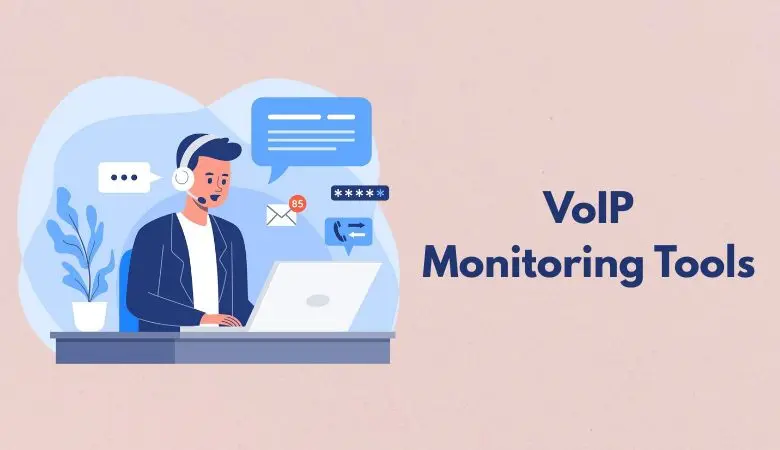Behind the Screens: 7 Underrated Features That Make VoIP Monitoring Tools Truly Exceptional

When your business relies on VoIP systems to keep operations smooth, one minor glitch can echo across customer service, sales, and internal communication. That’s why having a reliable VoIP monitoring tool isn’t just nice to have—it’s essential. But not all tools are created equal. Beyond uptime metrics and dashboards, there are some surprisingly overlooked features that can significantly impact your monitoring experience.
Below, we explore seven key capabilities that define a truly standout VoIP monitoring solution—and why they matter more than they seem at first glance.
Real-Time Call Quality Analytics
Imagine trying to diagnose a network issue after a call has dropped, with only a vague complaint to go on. A great VoIP monitoring tool sidesteps that frustration with real-time call quality analytics. This means being able to observe call jitter, latency, and packet loss as they happen—not just in post-call reports.
Real-time insights allow teams to act instantly, sometimes even before users notice something’s off. This doesn’t just save calls; it preserves customer trust and keeps agent productivity high.
End-to-End Network Visibility
VoIP performance doesn’t live in a vacuum—it’s influenced by every part of your network, from the local router to the cloud provider’s data center. A tool that offers end-to-end visibility lets you pinpoint bottlenecks, whether they’re internal or external.

By mapping the journey of every call and analyzing where delays or losses occur, IT teams can solve issues faster and more accurately. No more guessing games or finger-pointing between departments.
Intelligent Alerting That Doesn’t Overwhelm
Alerts are helpful—until they’re not. If your inbox is flooded with low-priority warnings, it’s easy to miss the ones that really matter. That’s why top-tier monitoring software uses intelligent alerting: customizable thresholds, escalation rules, and even AI-driven noise reduction to surface only the most relevant incidents.
The result? Less alert fatigue, faster responses, and a more focused IT team.
Historical Call Data with Searchable Insights
Tracking patterns is just as important as fixing immediate problems. Strong monitoring tools store historical call data and allow you to search by user, IP, timestamp, or issue type. Over time, this builds a rich performance archive that helps you spot recurring issues, evaluate changes after a new rollout, or even justify infrastructure upgrades.
This feature often plays a role in compliance too, making it easier to retrieve records during audits or internal reviews.
Support for Multi-Vendor Environments
It’s rare for businesses to rely on a single vendor for all communication needs. Whether it’s a hybrid of on-premise and cloud systems or a mix of SIP trunk providers, a monitoring tool needs to handle complexity without forcing you into one ecosystem.
The best platforms support various hardware, protocols, and service providers—letting your team monitor everything from a single pane of glass. It makes onboarding new tools easier and ensures you’re not locked into one vendor just because your monitoring solution can’t keep up.
User-Centric Dashboards
Data is only helpful if people actually use it. That’s why dashboards should be clean, intuitive, and customizable depending on the role. A technician may want packet-level traces, while a manager might prefer summaries of call volume trends and SLA compliance.
Great tools let users personalize views, set up role-based access, and export reports without calling IT for help. The more accessible the insights, the faster decisions can be made.
Proactive Testing & Synthetic Calls
This is where the magic of simulation comes in. Proactive monitoring tools run synthetic calls at regular intervals to mimic real user behaviour—before anyone picks up the phone. This allows teams to catch issues like dropped packets or poor route performance in advance, reducing the chances of real-user disruptions.
It’s a feature that bridges the gap between monitoring and prevention—and one that too few companies make use of.
A Quick Note on Terminology
Some solutions in this space are referred to as voice monitoring software rather than VoIP-specific tools. While there’s overlap, true VoIP monitoring platforms go beyond just tracking voice activity—they analyze the underlying transport mechanisms, protocols, and network health, all of which influence voice performance. It’s worth double-checking what level of insight a product really offers before committing.
Final Thoughts
The best VoIP monitoring tools do more than keep an eye on your system—they help your team anticipate problems, make smarter decisions, and deliver consistently great call experiences. Whether you’re supporting a global call center or a local business with a few lines, it pays to look beyond the basics and choose a solution built for the long haul.
When evaluating platforms, keep these seven features in mind. They might not all be on the front of the brochure, but they’re often what separates a decent tool from a truly indispensable one.
